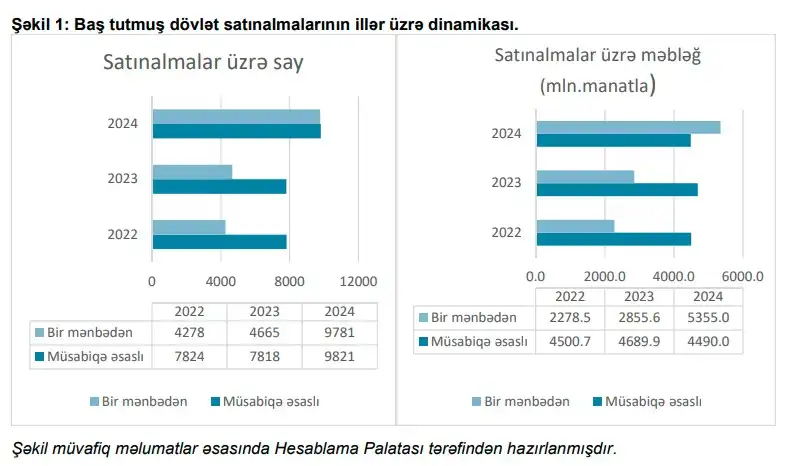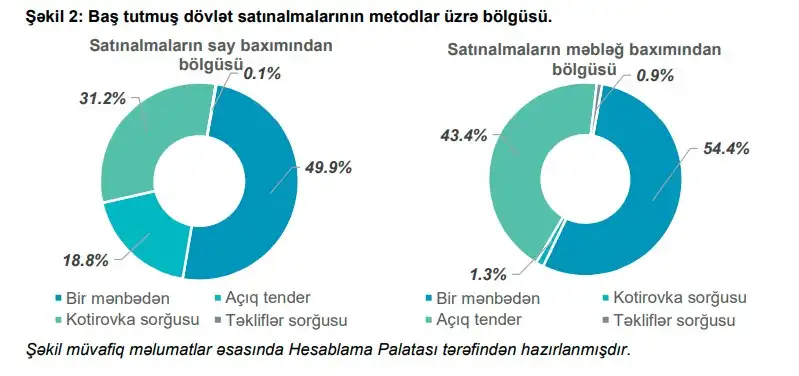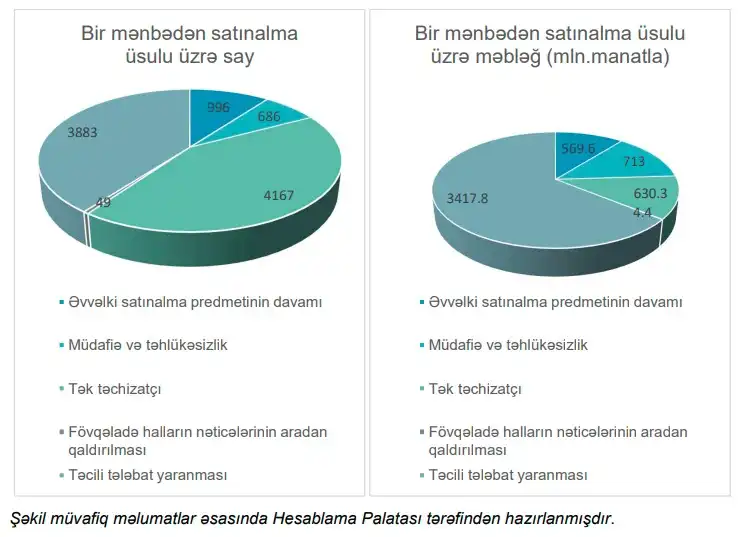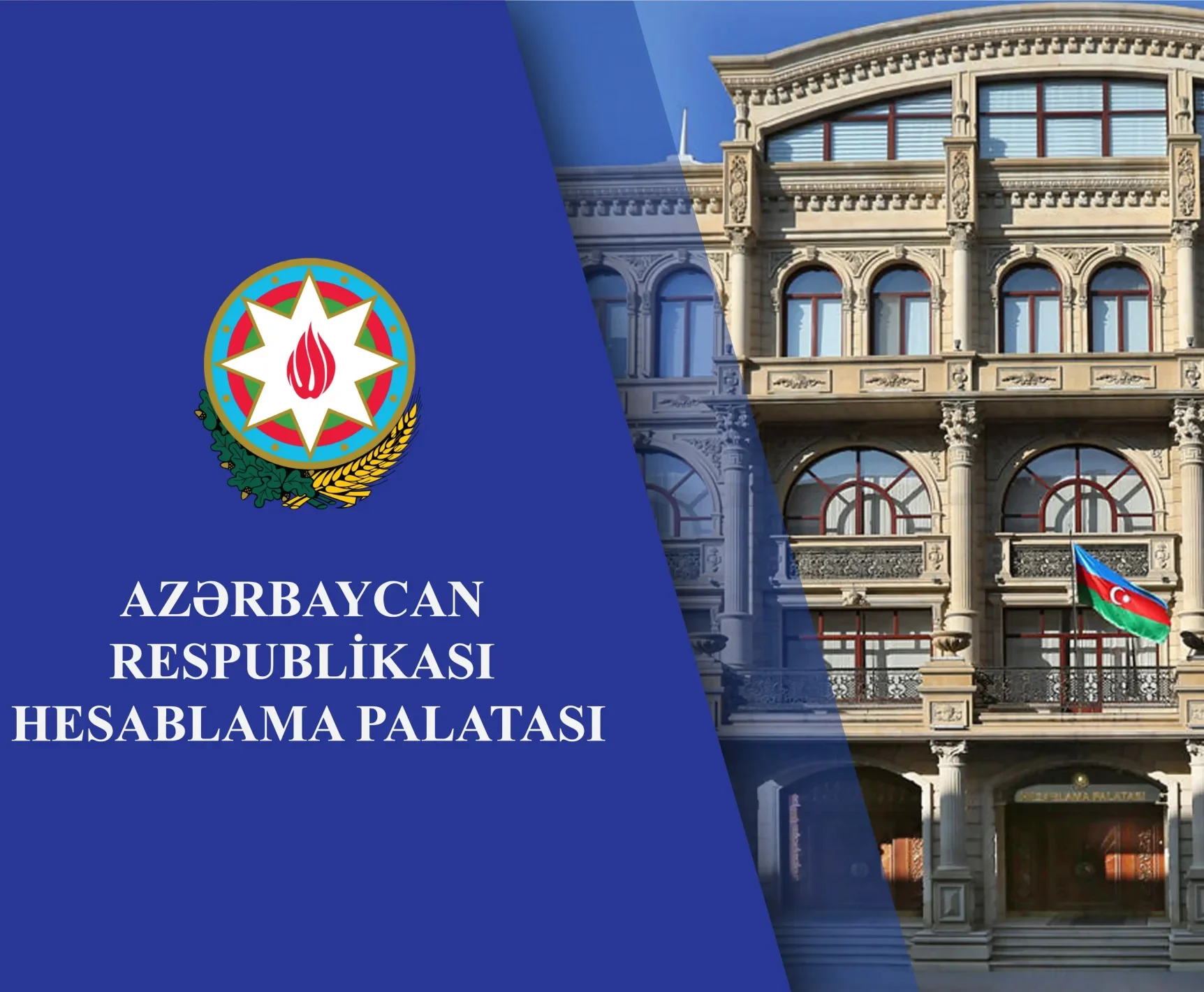Why are there so many single-source procurements in government agencies? – The Chamber explained the reason
In 2024, a total of 19,602 public procurement procedures were conducted in Azerbaijan, amounting to 9 billion 845 million manats.
According to FED.az, last year half of the procurements by number, and more than half by value, were carried out through the single-source method.
Specifically, 50.1% of all procurements, or 9,821 procurements, were conducted through tenders. Almost the same amount — 9,871 procurements — were carried out from a single source.
In terms of value, single-source procurements still far exceed tender-based ones. In 2024, the total amount of procurements was 9 billion 845 million manats, of which 5 billion 356 million manats, or 54%, were from a single source.
Tender-based procurements amounted to only 4 billion 489 million manats, representing 46% of the total. In other words, single-source procurements exceeded tender procurements by 867 million manats.
Despite reforms in recent years in the field of public procurement and the strengthening of oversight, single-source procurements have not decreased — on the contrary, they have increased.
In 2023, the total volume of procurements across the country was 7 billion 545 million manats. Of this, 4 billion 690 million manats (62%) were through tenders, while 2 billion 855 million manats (38%) were through a single source.
The number of single-source procurements was also lower in 2023. That year, a total of 12,483 procurements were conducted, of which 7,818 (63%) were through tenders, and 4,665 (37%) were single-source.
In other words, compared to 2023, the number of single-source procurements in 2024 increased by 5,126, or 2.1 times. The value of single-source procurements rose by 2.5 billion manats, or 87.5%.

In 2024, 18.3% of tender-based procurements (1,849 contracts) and 42.9% of single-source procurements (4,231 contracts) were for amounts under 5,000 manats. This increase is attributed to the fact that, due to new legislation, small-scale procurements were also brought under the scope of the public procurement law. As a result, while the total amount covered by the law increased, it also led to higher administrative burdens and technical challenges.
Research conducted by the Chamber of Accounts shows that government bodies justify the high share of single-source procurements with two main reasons: urgent need (63.8%) and the unique position of a specific supplier (42.6%).
The main causes of urgent need included the purchase of vehicles, procurement of catering services (for current provision), long-term reconstruction and construction works, procurement of clothing sets, etc.
Furthermore, the Chamber notes that in some cases, the organization and implementation of events with pre-determined dates, as well as the provision of certain services for these events, were also carried out through the single-source method under the pretext of “urgent need.”

Another reason for single-source procurement was the availability of the procurement item exclusively from a specific supplier and that supplier’s exclusive rights over the product.
However, the Chamber also notes that in some cases, despite the existence of a competitive environment in the domestic market, where certain goods and services were offered by several companies, procurements were still conducted from a single source under the justification of a “sole supplier.”
The Chamber’s research showed that in 2024, 18.3% of tender-based procurements (1,849 contracts) and 42.9% of single-source procurements (4,231 contracts) were carried out for amounts below 5,000 manats. This was due to the fact that, under the new legislation, small-scale procurements were also included within the scope of the public procurement law.

Overall, while this innovation increased the amount covered by the law, it also resulted in higher administrative burdens and technical difficulties for government agencies.
Source: FED.az


